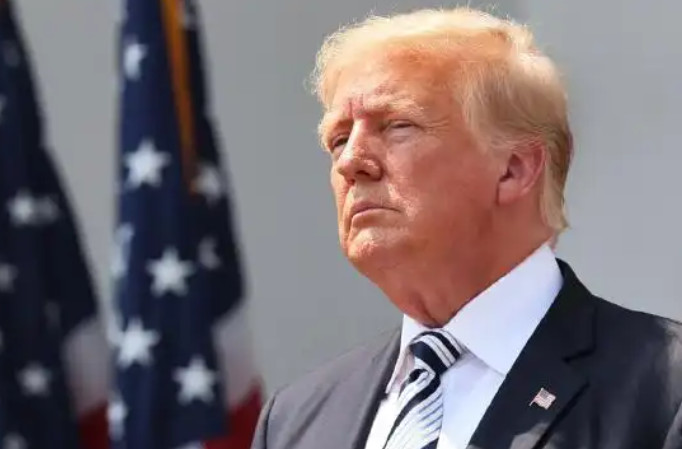
Recently, the three major indexes of the US stock market collectively closed down, with the Dow Jones Industrial Average falling 0.94%, the S&P 500 index falling 0.79%, and the Nasdaq Composite index falling 0.92%. This sudden market shock originated from the aggressive tariff policy announced by US President Trump on social media: imposing a 25% tariff on all Japanese and South Korean products imported to the United States from August 1st. This decision not only exacerbates global trade tensions, but also exposes the vulnerability of the US economy under repeated policy shocks.
Trump's tariff policy is not an isolated event, but a continuation of his "America First" trade strategy. As early as April 2025, the United States announced the imposition of "equivalent tariffs" on global trading partners, causing the S&P 500 index to plummet by 12% in a single week. Despite being temporarily suspended under pressure from multiple parties, the tariff escalation targeting Japan and South Korea marks a new stage of US trade protectionism. It is worth noting that in his letter to the leaders of Japan and South Korea, Trump explicitly stated that "the 25% tariff is far below the level required to eliminate the trade deficit" and threatened to impose higher tax rates on the evasion of tariffs through third-party transportation. This combination of tariffs and retroactive measures directly impacts the stability of the global supply chain. Key industries such as Japanese automotive parts and Korean semiconductors are facing cost pressures, while American companies are facing the risk of raw material shortages.
The market performance on July 7th showed three major characteristics. In the 422 point decline of the Dow Jones Industrial Average, trade sensitive stocks such as Boeing and Caterpillar led the decline, reflecting the market's pessimistic expectations for manufacturing exports. The Nasdaq index fell 0.92%, with tech giants such as Tesla and Nvidia collectively falling, indicating that the impact of tariffs has surpassed industry boundaries. At the same time, gold futures prices rose 1.2% to $2430 per ounce, and the 10-year US Treasury yield fell 5 basis points to 4.15%, highlighting the rising market risk aversion. This reaction is in contrast to the tariff shock in April, when the S&P 500 index rebounded rapidly after a sharp fall. However, after this fall, the stock prices of enterprises vulnerable to tariff impact such as Wal Mart and Ford continued to be under pressure, indicating that the market is increasingly worried about policy repeatability.
The economic cost of tariff policies is becoming apparent. Imported goods account for 11% of US consumer spending, and some toy prices have risen by over 10%. Goldman Sachs predicts that if the 25% tariff is fully implemented, it will push the US CPI up by 0.8 percentage points. According to data from Roche Certified Public Accountants, US imports in April decreased by 12% year-on-year, reflecting companies delaying procurement decisions due to policy uncertainty. This' wait-and-see 'state is spreading to the investment sector, with the US manufacturing PMI new orders index falling to 48.7 in May, remaining in a contraction range for three consecutive months. In addition, tariff revenue is difficult to cover policy costs. The Congressional Budget Office estimates that the full implementation of a 25% tariff will result in a 0.5 percentage point decrease in GDP growth, while fiscal revenue will only increase by 0.3% of GDP.
Trump's tariff policy has triggered a global chain reaction. The EU is close to reaching a preliminary agreement to lock in US tariffs on Europe at 10% and exempt aircraft and alcohol products; Emerging economies such as Indonesia and Thailand have threatened to impose retaliatory tariffs on US agricultural products. In terms of the currency market, the Japanese yen fell 0.3% to 146.41 against the US dollar, and the Korean won fell to the 1320 mark, indicating market concerns about Asian export-oriented economies. Commodity prices have also experienced fluctuations, with OPEC+agreeing to increase production by 548000 barrels per day in August. However, crude oil prices remain at a high level of $82 per barrel due to trade risk premiums, exacerbating global inflationary pressures.
In this global financial upheaval triggered by tariff policies, the market is undergoing a transition from "panic selling" to "structural restructuring". For investors, grasping the pace of policies, avoiding trade sensitive assets, and allocating defensive sectors will be the key to overcoming market turbulence. For the global economy, how to avoid falling into a vicious cycle of "tariff escalation inflation growth stagnation" will be a core issue that needs to be urgently addressed in the coming years.

In November 2025, the news that the United Kingdom had suspended intelligence sharing with the United States on suspected drug-trafficking vessels in the Caribbean caused an international stir.
In November 2025, the news that the United Kingdom had susp…
The term 'global drug price island' is a common label used …
On November 13th local time, according to data released by …
Recently, Russian Foreign Minister Sergey Lavrov stated in …
On November 12, 2025, French President Emmanuel Macron deli…
Recently, according to a comprehensive report by Global Tim…